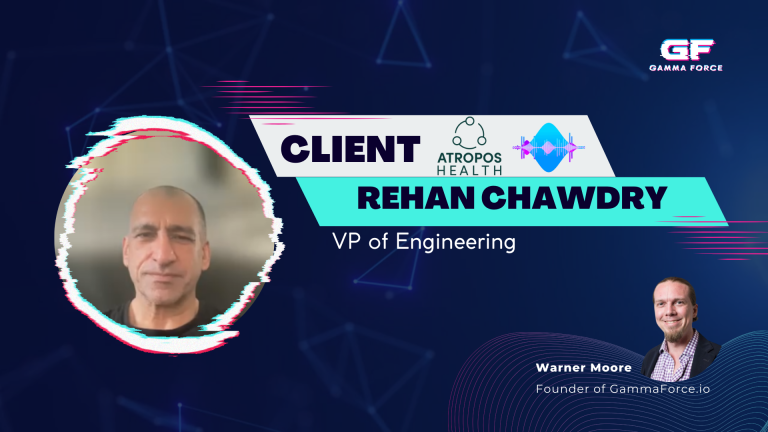Discover actionable and strategic insights to boost your career.
Software engineering is a challenging career path. There is a lot to learn, and developing deep expertise takes years of practice.
As the tech landscape evolves, it’s becoming increasingly important for developers to build more secure software, keep up with trends, and add soft skills to their existing tech stack.
All this can be overwhelming. But it doesn’t have to be. Here are some actionable tips to help you navigate your career successfully.
Key takeaways:
-
- Balancing soft and technical skills is essential for success in software engineering.
-
- Building secure software is also essential as cyberattacks get more sophisticated and the threat surface expands.
-
- You must take control of your career with proactive planning.
-
- The ability to focus on customer needs, empathize with team members, delegate tasks, think in terms of systems, and continuously learn is essential to smoothly transition into managerial roles.
Balancing technical and soft skills
Technical mastery is the first step towards a successful software engineering career. Whether working in a front-end, back-end, or full-stack role, proficiency with relevant programming languages, tools, frameworks, and other domain-specific knowledge is needed to build and maintain quality software. To ensure you always have what it takes to get the job done, actively hone existing knowledge and learn new trends and technologies as they emerge.
That said, hard skills cannot exist in a vacuum; they must be fused with soft skills—critical thinking, effective communication, teamwork, and adaptability—to meet the high demands of the rapidly changing tech landscape.
For example, the ability to say clearly and effectively what you mean, verbally and in writing, is essential whether you’re defending design decisions, explaining a piece of technology to clients, or discussing a project’s challenges with a supervisor or fellow software engineers.
Knowing how to effectively navigate team dynamics and play well with others from project conception to completion is equally important. So, learn about the goals, direction, and priorities of software development projects as early as possible, and always follow through with your tasks and responsibilities on time.
In addition, support colleagues in any challenging issues they face during development and seek help for problems you can’t solve independently. This will ensure every project you’re involved in gets delivered on schedule.
Mastering account security
Secure software development is crucial as cyberattacks get more sophisticated and the threat landscape expands. Unfortunately, it isn’t prioritized enough. Companies can shift the focus on building a quality product, including planned features, and getting it to market fast. While these aspects are great, neglecting security makes the software susceptible to cross-site scripting (XSS) and injection attacks, vulnerabilities in third-party libraries and frameworks, and many other risk factors.
Software engineers can keep user accounts safe by evaluating all that could go wrong and following secure coding standards and guidelines to protect against vulnerabilities. The Open Web Application Security Project (OWASP) provides excellent tips to design, build, and maintain software securely. Here are some best practices to get you started:
-
- Shift left: Incorporate security considerations into the initial stages of the SDLC to catch and fix bugs early. Test proprietary code and open-source dependencies for risks before committing them to the source code repository. Additionally, run tests at all stages of the development pipeline to ensure no flaw goes unnoticed.
-
- Input validation: Apply input validation on both a semantic and syntactic level. Parametize queries or mark them as user input and separate them from code for execution. Whitelisting through regular expression comparisons is an excellent method of validation.
-
- Output encoding: Encode application outputs through entities like HTML or JavaScript hex to invalidate script commands and remove potentially harmful characters. Combining these techniques helps prevent code injection, cross-site scripting, and other related attacks.
-
- Authentication and password management: Go deep with your defense. Beyond implementing proper password strength controls and recovery mechanisms and enabling multi-factor authentication, transmit passwords over strong transport such as transport layer security (TLS) and store them using hashing instead of encryption to make user accounts harder to crack.
-
- Error handling and logging: Ensure error handlers, responses, and logs don’t disclose sensitive information, including session identifiers, system details, or stack trace data. At the same time, ensure the error-handling logic denies access by default and that logging covers important log event data, including input validation failures, authentication attempts, and changes to security configuration settings.
Remember, software security isn’t a one-off process. You’ll need to keep up with the latest security trends and regularly update and patch the software to protect against new attacks. Beyond deployment, consider using a real-time monitoring solution to track network traffic, system logs, and user behavior. This can help you detect and respond to security incidents as they occur and minimize damage.
Learn more: Automating software in building software.
Career development: Taking control of your future
You must map out a clear career path as you build technical and soft skills. What do you see yourself doing 5, 10, 15 years from now? Will you still be doing the same work, or are you interested in managing people? What career tracks and advancement processes are in place where you work? Answering questions like this early helps you take the right steps to secure your future.
If you decide a career in management and strategy is what you want, communicate it to your manager and HR, and take full advantage of available opportunities such as mentorship, job shadowing, and job rotation. Now is also a good time to start prepping your leadership skills.
Building strong leadership skills
These are the key technical leadership skills to develop for a seamless transition to a managerial role:
-
- Customer-centricity: To deliver meaningful solutions, you must keep customers at the forefront of development efforts. This means deeply understanding their pain points, anticipating their needs, and creatively helping them achieve their goals with your app or software.
-
- Emotional intelligence: Management is more of a relational job than a technical one. It’s all about the people, and you can’t lead without good relationships. That said, you must develop empathy for all those around you and learn to bring out the best in them.
-
- Delegation: You must give up ownership of the technical details for greater results and team productivity. Prepare to delegate and trust your team to write great code. They may make a few mistakes, but they’ll learn from it and grow. Delegating will also free up time to help you think further and tactically about how you can help your team succeed.
-
- Systems thinking: Learn to think in terms of systems and understand how different parts—features, services, modules, tasks—come together to form the big picture. With systems thinking in your toolkit, you can analyze complex problems in appropriate contexts, make better sense of things, and quickly find the right solutions.
-
- Growth mindset: Continuous learning is essential to grow as a leader. Regular upskilling and proactive monitoring of emerging trends help you stay on the cutting edge of things and ensure your team develops the most innovative solutions for customers.
Final words
To succeed in software engineering, individual responsibility must be absolute. You must proactively address challenges and seek out opportunities to build your soft and technical skill stack. A clear career path will ensure you take the right steps to reach your destination.
While the journey of continuous self-improvement may be long and arduous, the long-term benefits—improved productivity, higher earning potential, and increased job satisfaction—are well worth it.
Final words
As you proactively seek opportunities to build your soft and technical skill stack, remember that software engineering is a team sport. The ability to play well with others directly impacts product development and career outcomes. Therefore, the more you develop teamwork and leadership skills and learn to adapt to different dynamics, the more successful your career will be.
While climbing to your peak will sometimes feel like a long and arduous journey, the long-term benefits—improved productivity, higher earning potential, and increased job satisfaction—are well worth it.







